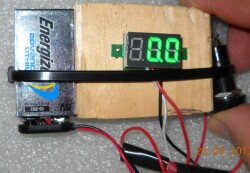

My questions are these: is this a legitimate concern and if so, could the old lead acid battery be left in the circuit in parallel with the lithium battery to counter that potential problem? It seems to me that that configuration would not be too different from having the lithium battery in a trailer or RV that is electrically connected to the car's electrical system. But a lead acid battery would act like a large capacitor and absorb that energy. But I was just told by a supplier (Battle Born) that in a car, if the BMS sensed an over voltage/current condition from the car's alternator it could suddenly shut off causing a "high voltage fly back" condition that, because the alternator acts like an inductor, could damage the BMS or the alternator.

Many LiFePo4 deep cycle batteries have built in Battery Management Systems (BMS) to handle extreme charging/discharging conditions typically found in non-automotive applications. The third is compatability with the typical automotive charging system. The LiFePo4 would cost about 5 to 6 times as much as a lead acid initially but should have something like 10 times the useful charge/discharge cycles.

A 50 AmpHr LiFePo4 battery should provide as much (and more consistent voltage vs state of charge) back-up power as a comparable lead acid battery. The first is back-up power in case of gas engine failure. I am aware of three major concerns that need to be considered.

In my hybrid Toyota Highlander the small (50 Amp Hour) lead acid battery does not last very long (only a year or two) and since it only provides relatively low current for lights, accessories and system management electronics (the engine starter is powered by the high voltage traction motor battery pack), could that lead acid battery be replaced by a Lithium Ion (LiFePo4) battery with a comparable power capacity?


 0 kommentar(er)
0 kommentar(er)
